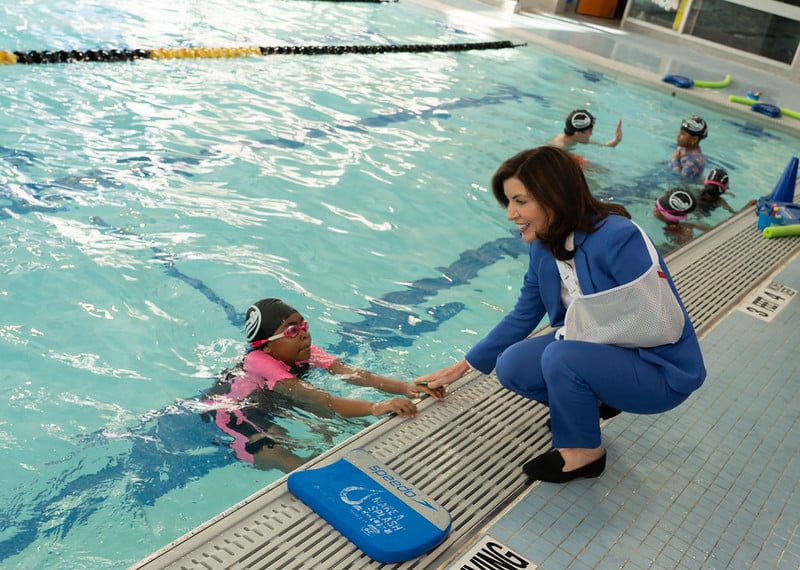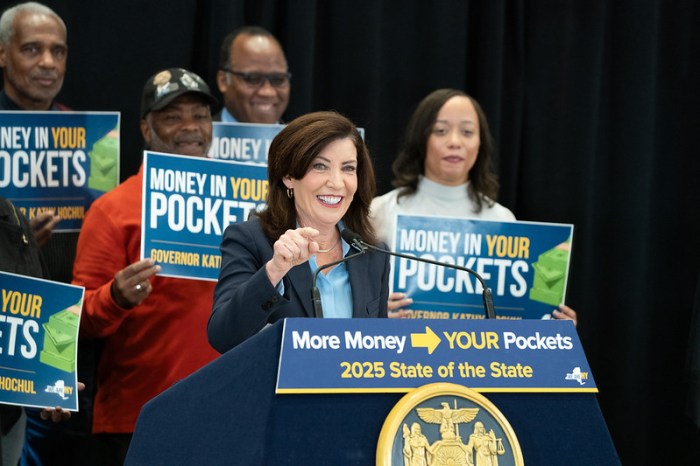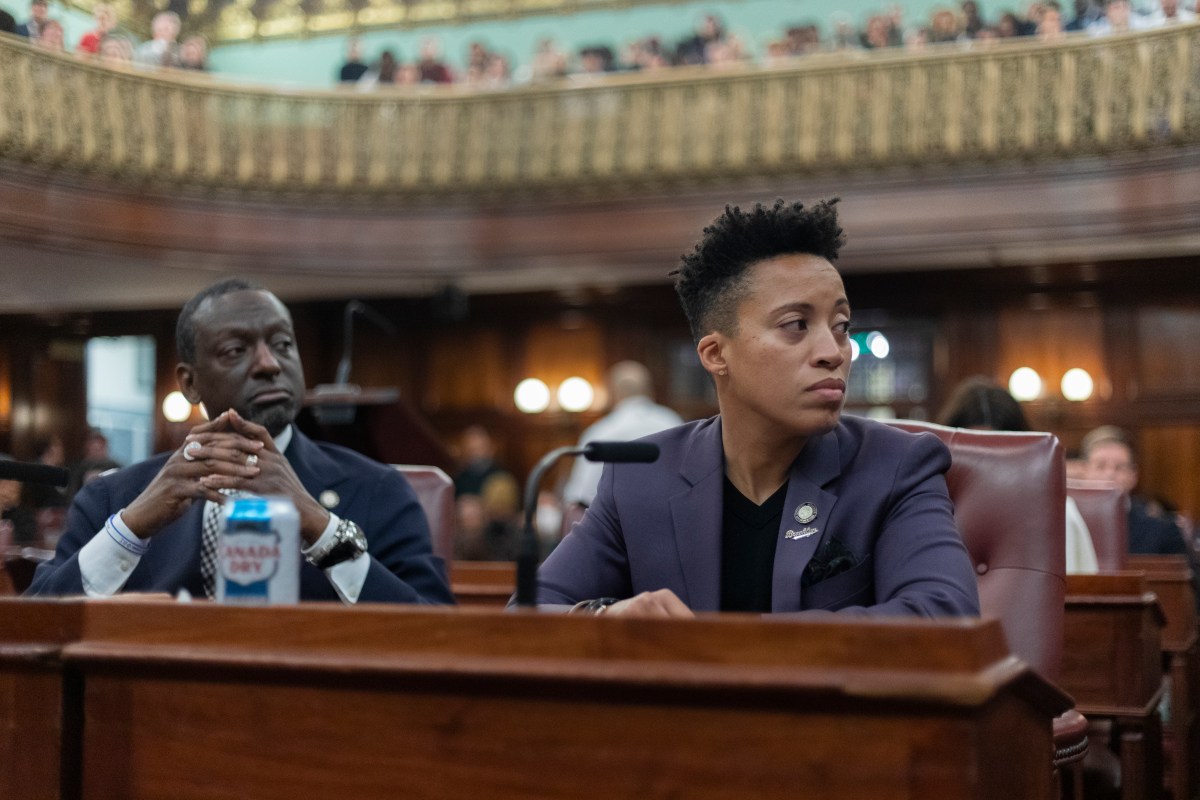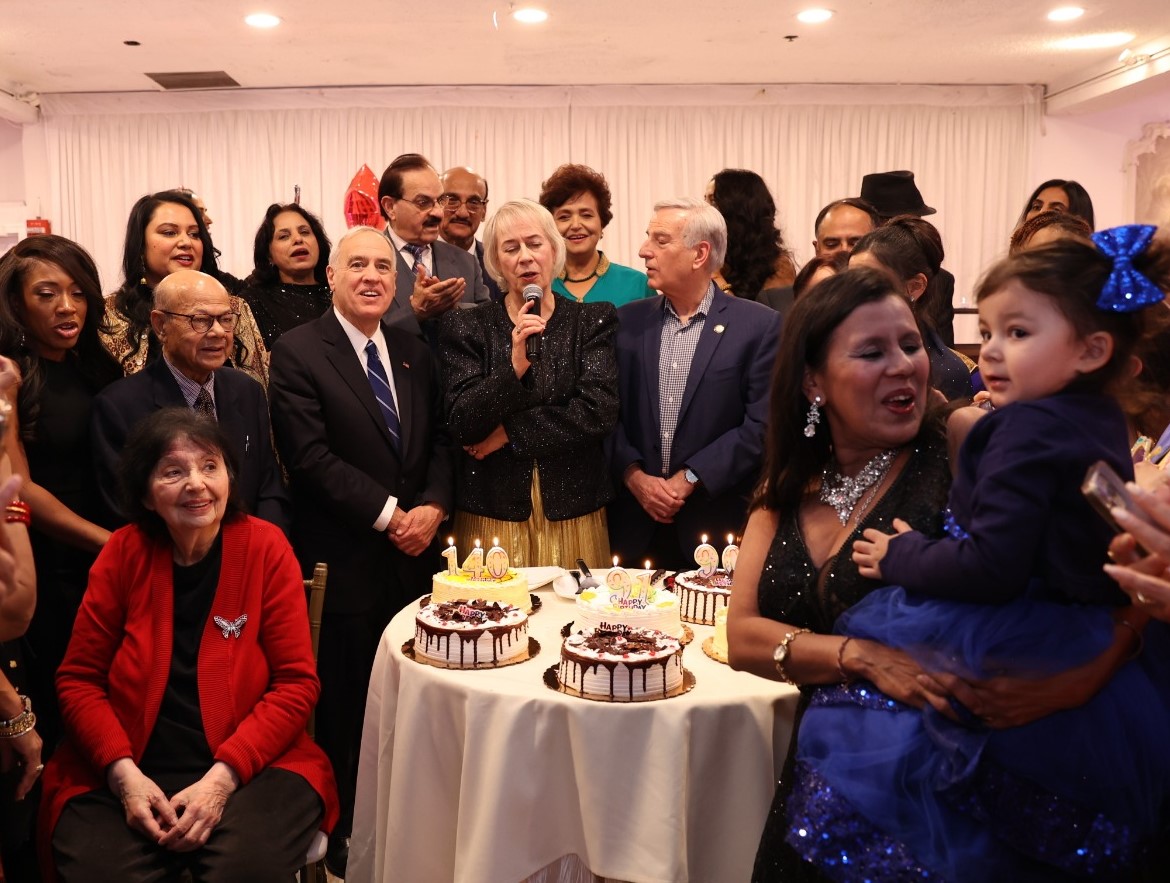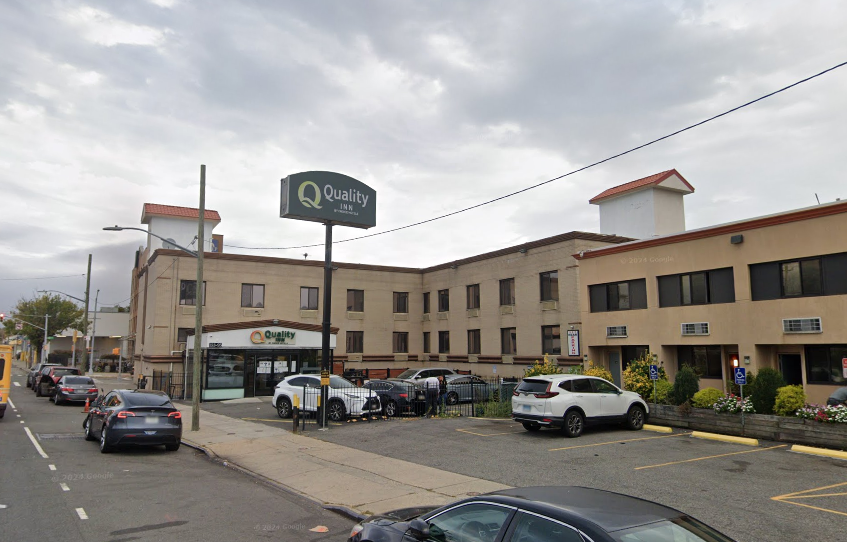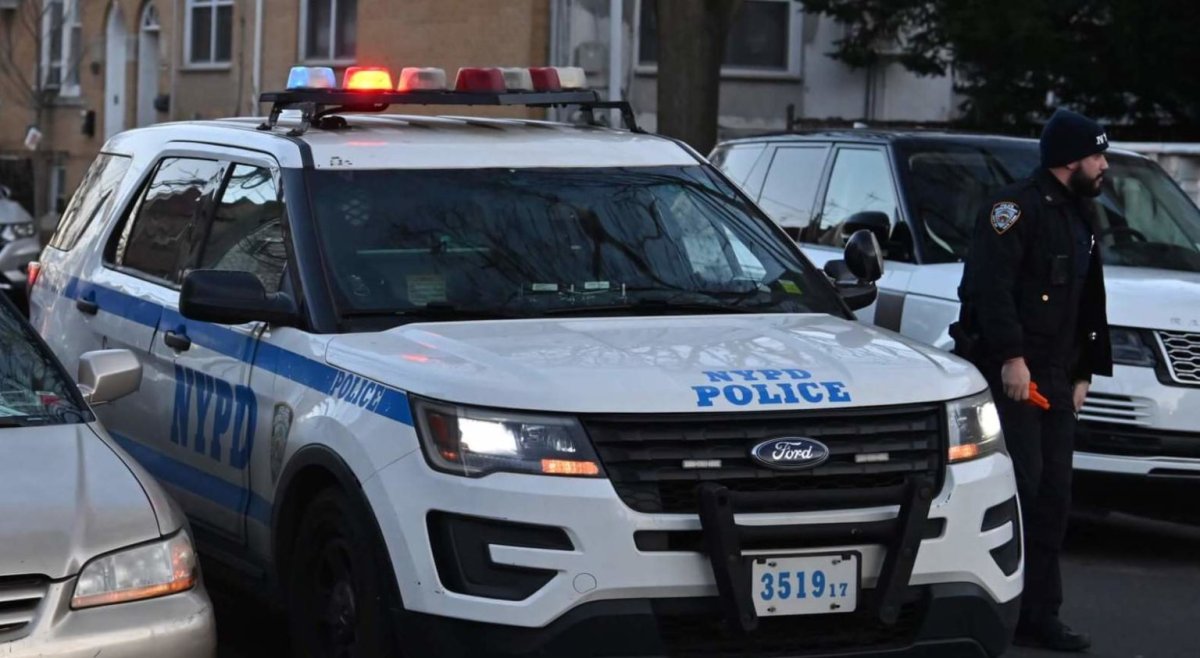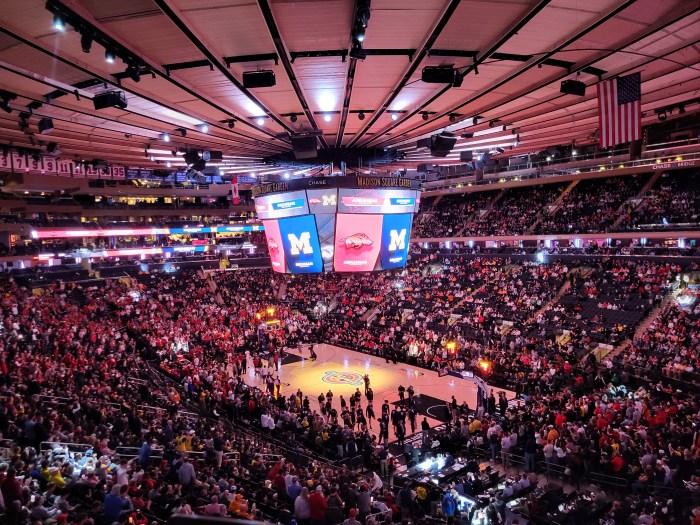Gov. Kathy Hochul on Friday rolled out a multipronged plan to build 10 new pools in underserved areas across the state and teach more New Yorkers how to swim, as drowning deaths have surged in recent years.
The plan, dubbed “New York Statewide Investment In More Swimming” (NY SWIMS), will include a $150 million in grants to help localities construct 10 new pools across the state in “high-need” areas over the coming years, develop “floating pools” that can be set up in natural bodies of water, and deploy “pop-up pools” in urban areas. The proposal, which Hochul unveiled during an event in Harlem on Friday, also includes an expansion of the state’s free child swimming lesson program.
As part of the plan, one of the floating pools — known as the +Pool — will be tested in the Big Apple this summer in a partnership between the governor and Mayor Eric Adams. It is unclear where in the city the floating pool will be placed.
The initiative is designed to prevent drowning deaths by making pools and swimming instruction more accessible in areas where they currently are not — low-income Black and brown communities.
“I’m putting forth a plan to dramatically increase access to swimming, particularly in underserved communities,” Hochul said. “It’s gonna expand our recreational opportunities and this is how we keep families safe.”
NY SWIMS will be run by the state Parks Department and administered by the Dormitory Authority, according to Hochul’s office. It was the latest proposal from Hochul’s upcoming State of the State address, slated for next Tuesday, that she previewed ahead of the speech.
The governor said drowning deaths have reached “record highs,” with 230 New Yorkers dying from drowning in 2021. Children are at a particularly high risk, she added, as drowning is the leading cause of death among 1- to 4-year-olds.
Black Americans fare even worse. Hochul said that Black people overall are one and a half times more likely to die from drowning and that Black children are three times more likely.
“If children knew how to swim, there would be thousands more young people growing up in our communities, more families intact, enjoying life,” the governor said. “Here’s the challenge: the pain is not shared equally among the population. Low-income communities, communities of color, have suffered decades of disinvestment in swimming facilities.”
The $150 million grant program is split three ways, according to the governor’s office.
One $60 million pot will fund the construction of new pools, and the renovation of older ones, by allowing localities to apply for the money through a competitive process. The dollars can then be used to pay for the design, construction or renovation of the pool facilities.
The second pot of $60 million is for developing floating pools that can be deployed in rivers and lakes. Hochul and Adams are joining forces to fund the +Pool in the five boroughs through a combination of $12 million from the state and $4 million from the city, which will be tested this summer and officially open next year.
“This was an invention … of being able to use our own waterways to find pools in communities who have historically been ignored,” Adams said of the floating pools.
However, it appears a location for the floating pool has yet to be chosen, with the governor’s office saying “multiple sites” are being considered.
The last bucket of grant money, $30 million, is for smaller mobile pop-up pools that can be set up in areas experiencing extreme heat during the summer months. The pools can be erected in parks, at block parties or other open spaces, Hochul said.
When it comes to actually teaching more children how to swim, the plan includes expanding the state’s free Learn-to-Swim program by increasing the number of state parks offering it from seven to 17 this year and more in future years.
However, the announcement comes as the state and city have experienced massive lifeguard shortages in recent summers at already existing pools and beaches, with just 650 lifeguards hired by the city Parks Department last summer compared to the 1,400 it had on staff before the COVID-19 pandemic.
To address the lifeguard shortage, the governor’s plan also boasts a grant program, to be administered by the Department of State, that will reimburse localities for the costs of recruiting and training new lifeguards. Additionally, the state will incentivize state university students who are good swimmers to become lifeguards by covering the cost of their certification exams and offering them college credit for hours spent on the job.
Hochul said she is eager to work with the mayor to find a solution to the city’s lifeguard shortage, when asked about it by a reporter following the press conference.
“I’m willing to work with the mayor and find out a solution to this because we don’t want to have yet another summer where kids, families, [are] anxious to swim, but the beaches stay closed because [there’s] no lifeguard,” the governor said.
But when Adams was pressed by a reporter as to why the city Parks Department recently delayed its program to teach more children how to swim and train new lifeguards as part of his November budget cuts, he dodged the question. Instead, Adams suggested the city could address the shortage by asking people to volunteer as lifeguards.
“We know we got tough choices, but now what we’re gonna do, we’re gonna get folks that know how to swim to come and help, volunteer,” Adams said. “All of us gotta be a part of this. All hands on deck.”



